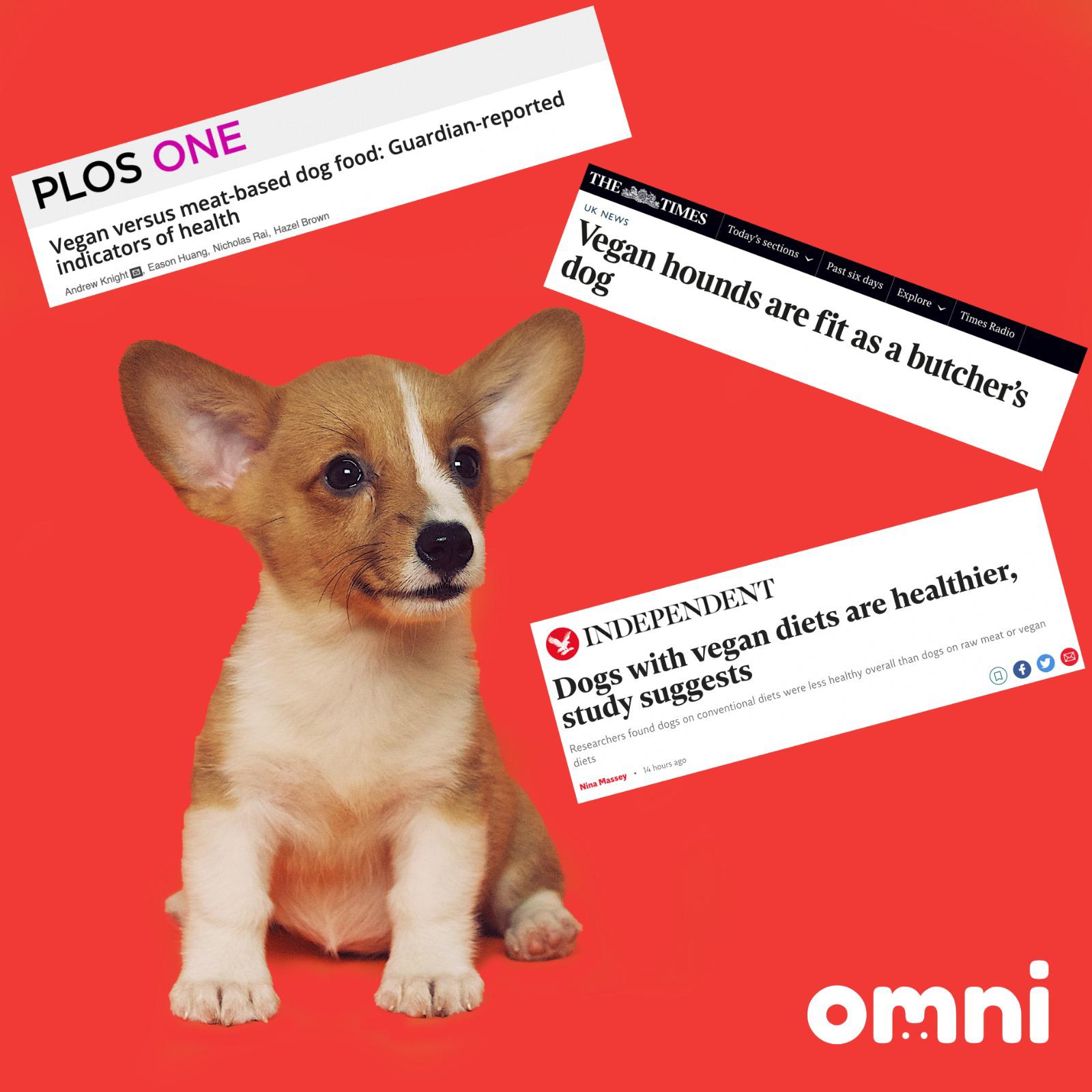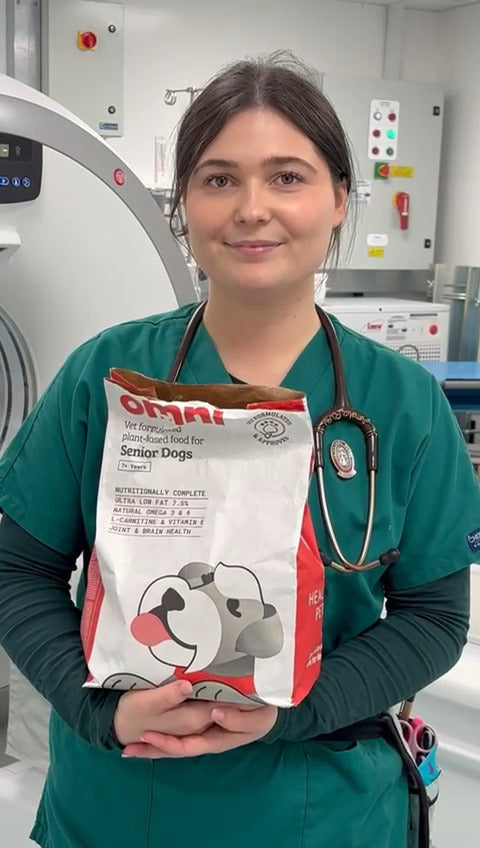Is Vegan Dog food healthier? Yes, according to research published this week.

Veterinary Surgeons working at OMNI, who make high protein, complete vegan dog foods, welcome the findings of a new scientific paper published yesterday by Plos One (Knight and others 2022). In the paper a survey was conducted of dog owners and 2,536 completed the questionnaire. The majority (54%) were feeding a conventional meat diet, 33% were feeding a raw meat diet and 13% a vegan diet.
The authors examined several indicators of ill health:
- Unusual numbers of veterinary visits
- Medication use
- Progression onto a therapeutic diet after initial maintenance on a vegan or meat-based diet
- Owner opinion and predicted veterinary opinion of health status
- Percentage of unwell dogs, and
- Number of health disorders per unwell dog
Dogs fed conventional diets came out worst, and dogs fed raw meat seemed to fare marginally better than those fed vegan diets. However, there were significant differences in average ages with the raw group being statistically younger which probably accounted for the difference.
The authors also considered the prevalence of 22 specific health disorders, based on predicted veterinary assessments. Percentages of dogs in each dietary group considered to have suffered from health disorders were 49% (conventional meat), 43% (raw meat) and 36% (vegan).
The authors concluded that the healthiest and least hazardous dietary choices for dogs, are nutritionally sound vegan diets.
Preliminary findings from our own survey of nearly 100 owners who switched to feeding OMNI in the last year have revealed similar findings:
- 49 % reported that their dog had a shinier/glossier coat
- 40% reported their dogs stools were firmer and easier to pick up
- 23% reported reduced smell due to breaking wind
- 30% reported that their dog had increased energy on walks
- 17% reported that their dogs’ anxiety behaviour improved
One merit of survey based studies like this, rather than kennel or lab based ones, is that it gives us data on how dogs are in their natural home living environment. However, the findings of studies involving owner surveys always have to be viewed cautiously as they can be subject to some bias. OMNI are looking to support randomised, controlled clinical trials to further validate these observed health benefits.
Like the authors of the Plos One paper, Vets at OMNI do not believe feeding raw food is safe because of the risk of contamination with pathogens such as STEC E.coli, Salmonella, Campylobacter and TB – all of which have been reported to cause serious disease (and even deaths) in humans as well as pets they are fed to. Raw meat diets, if not properly formulated may also lead to nutritional deficiencies which can take many years to manifest in clinical disease. For these reasons, OMNI is proud to be leading the exploration of plant based diets for dogs for a healthy sustainable future.
Reference
Knight A, Huang E, Rai N, Brown H (2022) Vegan versus meat-based dog food: Guardian-reported indicators of health. PLoS ONE 17(4): e0265662. https://doi.org/10.1371/journal. pone.026566







 85 Great Portland Street, 1st Floor, London, W1W 7LT United Kingdom
85 Great Portland Street, 1st Floor, London, W1W 7LT United Kingdom